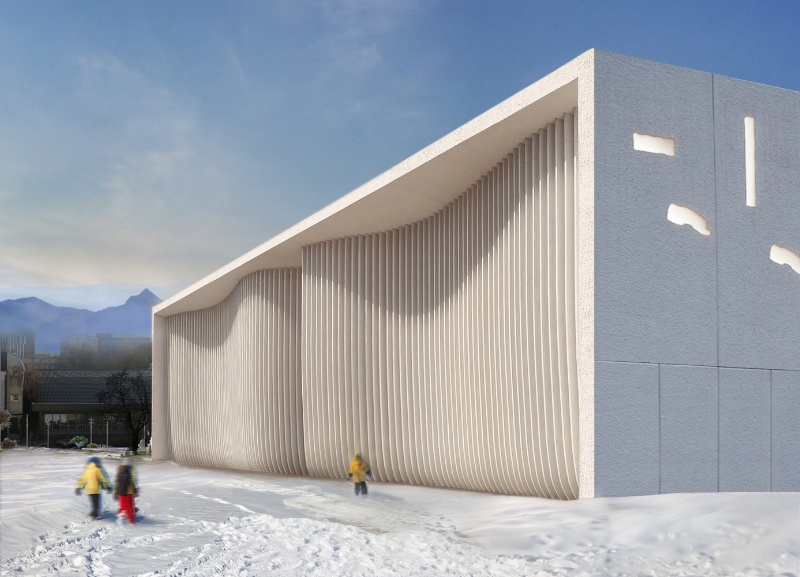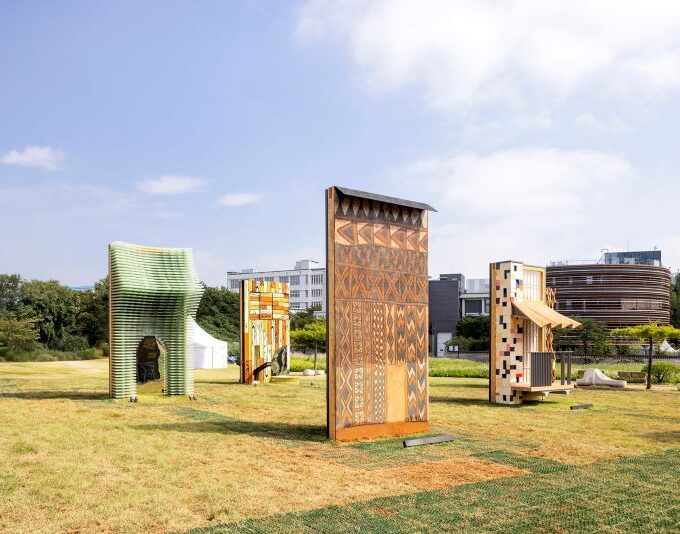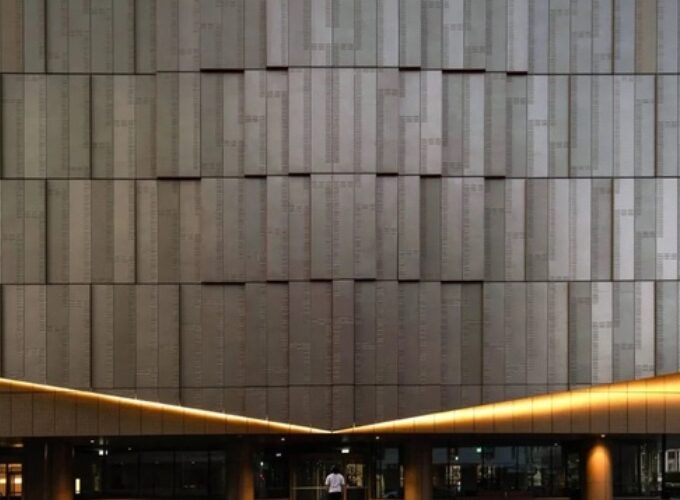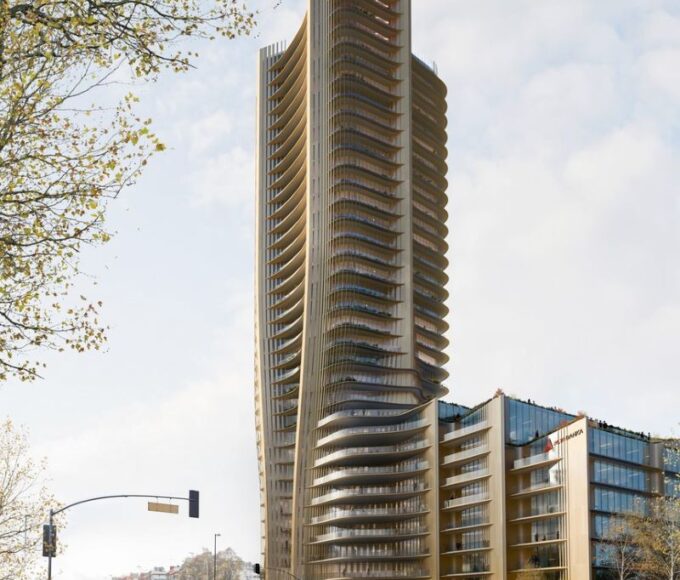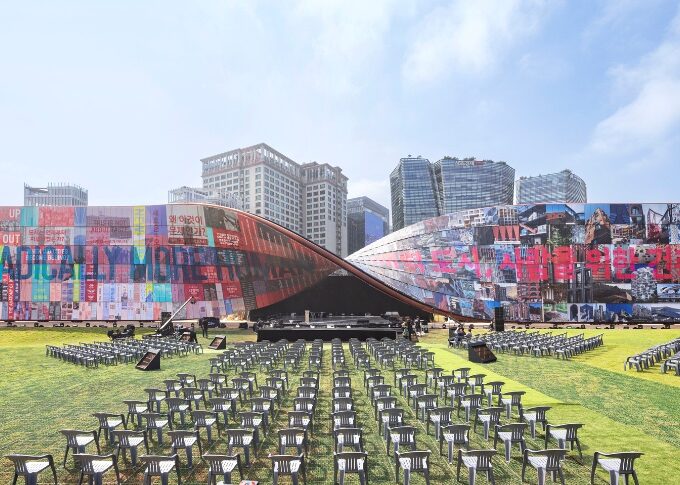Recently, British architect Asif Khan announced the design plan for the Tselinny Center of Contemporary Culture. The center is renovated from a Soviet-era cinema in Almaty, Kazakhstan. The project was launched in 2018 and is scheduled to open officially in April. Once completed, it will become Kazakhstan’s first independent cultural institution. It will not only receive indirect support from the Kazakhstan government in the field of cultural innovation but also provide an important development platform for creative talents in the local area and Central Asia.
The cinema to be renovated was built in 1964. As the largest Soviet-era cinema in Central Asia, it features a distinctive typical modernist architectural style, with a simple overall design and no excessive decorations. During the renovation, Asif Khan adhered to respect for the building’s history, preserving most of the cinema’s original structure—including the concrete frame and overall volume—while integrating modern facilities that meet contemporary standards, achieving a balance between historical style and modern functions.
The term “Tselinny” derives from the Russian word “tselina,” meaning “undeveloped but fertile land.” This naming symbolizes the great potential of the building as a cultural innovation hub. Based on loyalty to its modernist roots, the renovation design has implemented a number of key updates. The 18-meter-high auditorium inside the cinema has undergone structural reinforcement, and the lobby and wings have been rebuilt. This not only meets modern seismic standards but also further improves the connectivity between the building and the surrounding landscape, enhancing the overall spatial coordination.
In terms of exterior design, the building adopts eye-catching fiber-reinforced concrete panels for its facade. Some panels are equipped with wavy vertical fins, while others are decorated with abstract patterns similar to rock carvings. These designs draw inspiration from the original scratch paintings created by artist Evgeny Sidorkin, which depict traditional Kazakh life scenes. The new facade forms a sharp contrast with the cold modernist style of the original cinema and will bring visitors a unique experience of “soft white layering.”
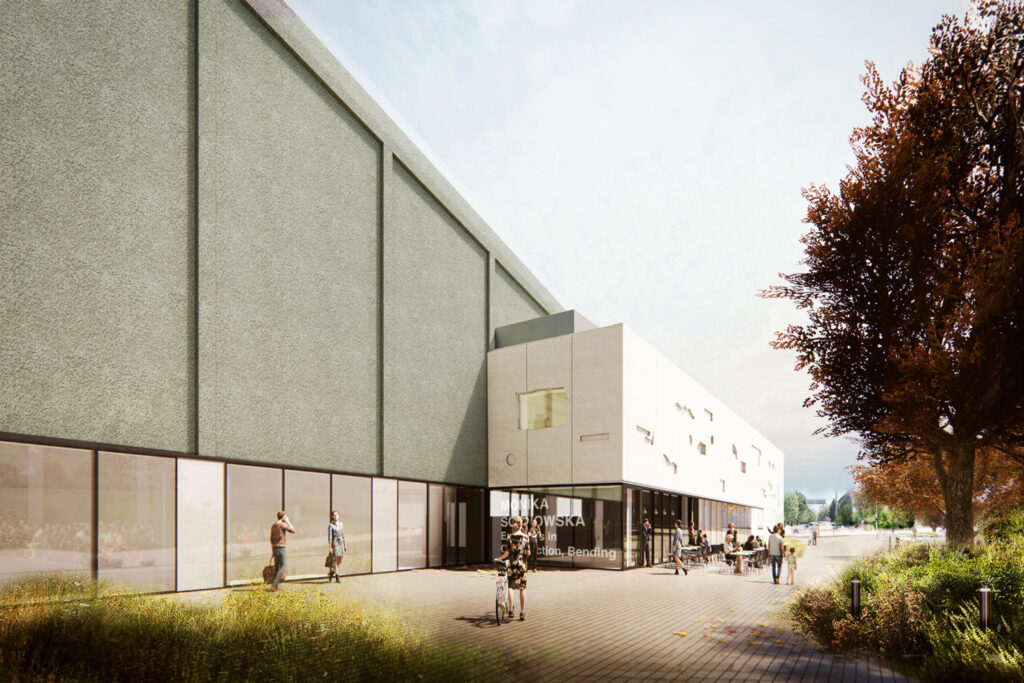
In terms of functional layout, the renovated Tselinny Center will add multiple functional areas, including galleries, workshops, a library, office spaces, and a bookstore, along with a rooftop terrace and a restaurant. Among them, the rooftop restaurant is designed to pay tribute to Almaty’s historic “Broadway” district—a place that gathers parks, squares, and landmark buildings left over from the golden age of the Soviet Union, carrying the city’s historical memories. Asif Khan stated that this renovation is not only about restoring a Soviet-era relic but also about creating the “never-before-existing Tselinny Center,” providing a space for a new generation of artists to explore transformative creativity.
A rich program of events has been planned for the center’s opening. An exhibition curated by historian Markus Lähteenmäki will be held to document the cinema’s transformation from the past to the present. Meanwhile, a variety of works by artists from Kazakhstan and Central Asia will also be exhibited, showcasing the regional cultural vitality. Founder Kairat Boranbayev expressed his hope to make the Tselinny Center a catalyst for promoting cultural development in the region, providing a platform for cultural exchange that facilitates interaction, creativity, and collaboration, and attracting talents from both local and international communities.
Notably, similar cultural building renovation projects are emerging worldwide. Zaha Hadid Architects, in collaboration with Serbia’s Bureau Cube Partners, won the design competition for the renovation of the Milan Vapa Paper Mill in Belgrade, which will be transformed into a modern cultural center commemorating the legacy of Nikola Tesla. Kéré Architecture is constructing a cultural center in Togo that highlights the cultural heritage of the Ewé people, with a planned opening in 2026. Additionally, the Detroit Cultural District renovation project, led by design teams Akoaki and Agence Ter, has launched a 15-year plan aimed at integrating twelve cultural institutions into a vibrant and easily accessible cultural space. Together with the Tselinny Center of Contemporary Culture. These projects are injecting new vitality into the new architectural design and innovation of global cultural buildings.


